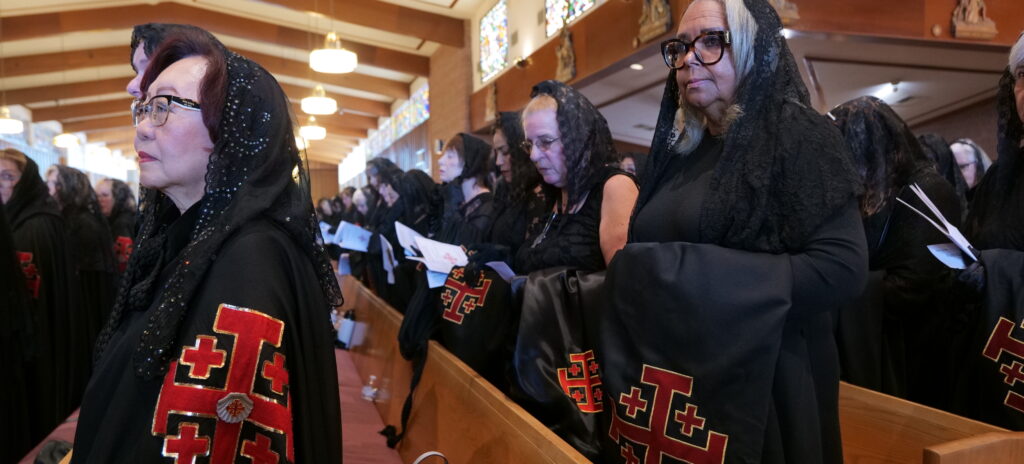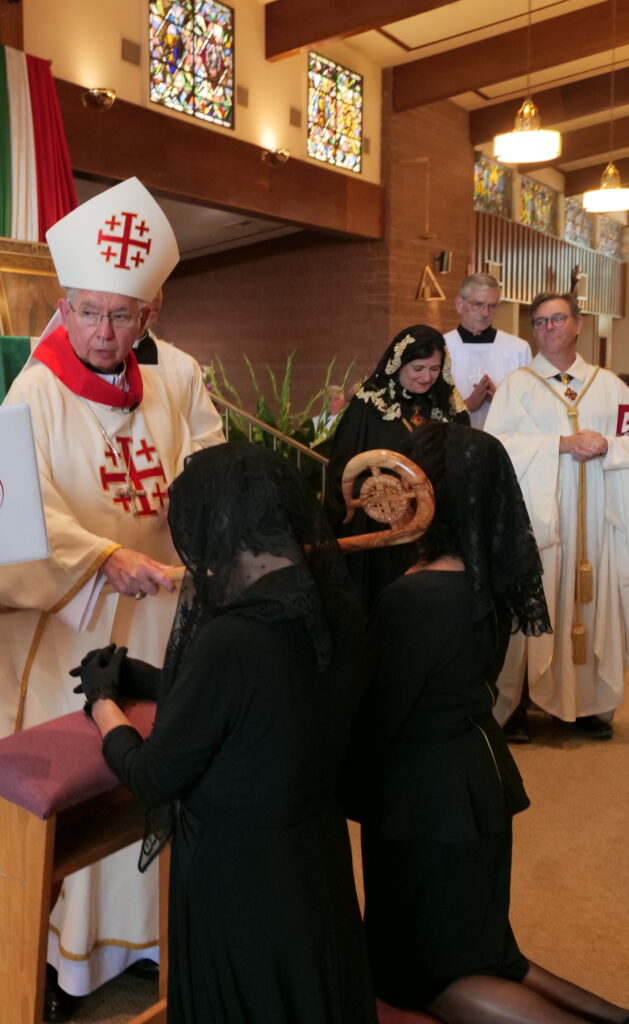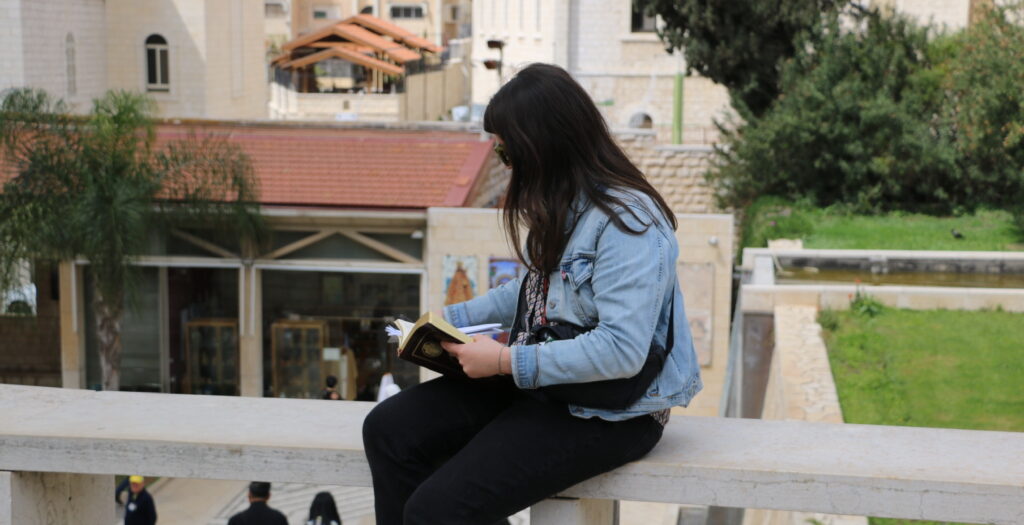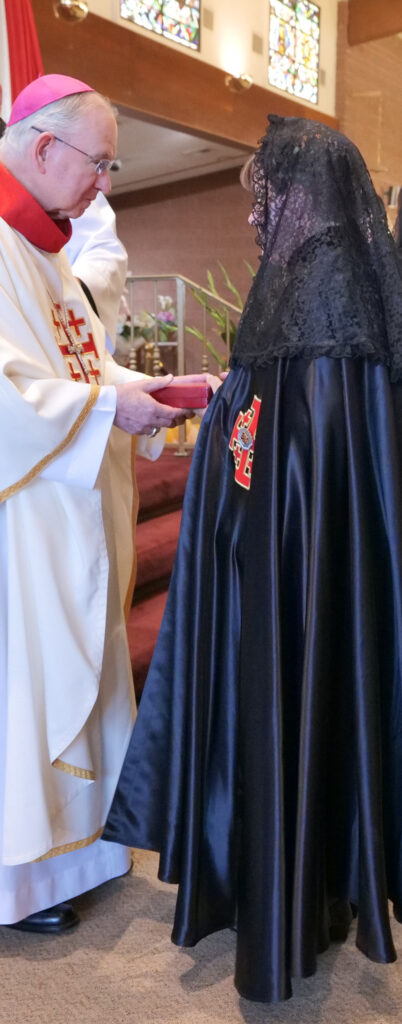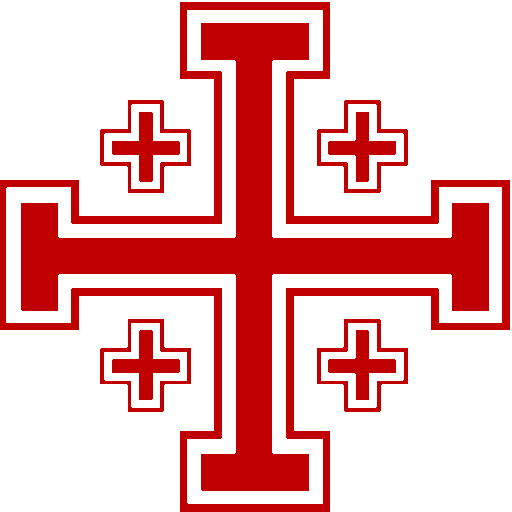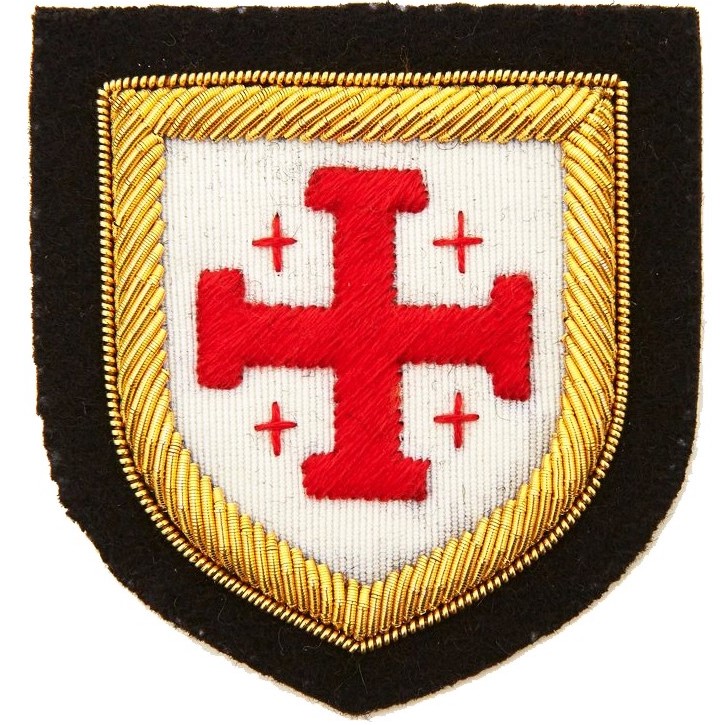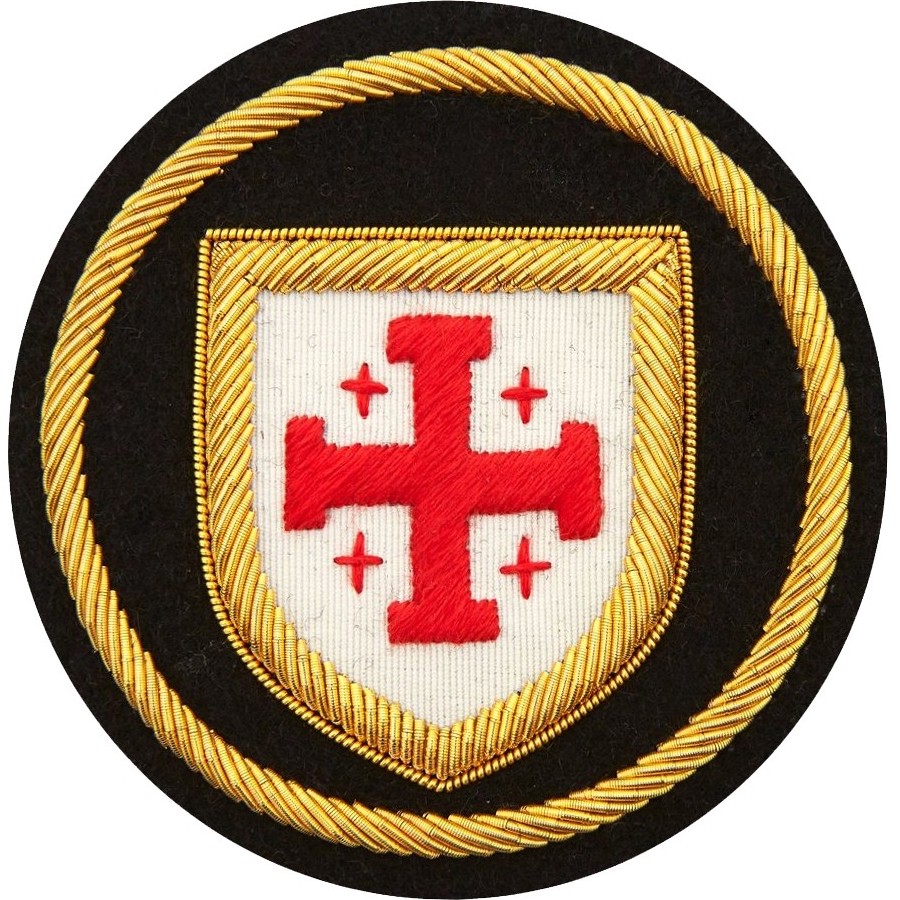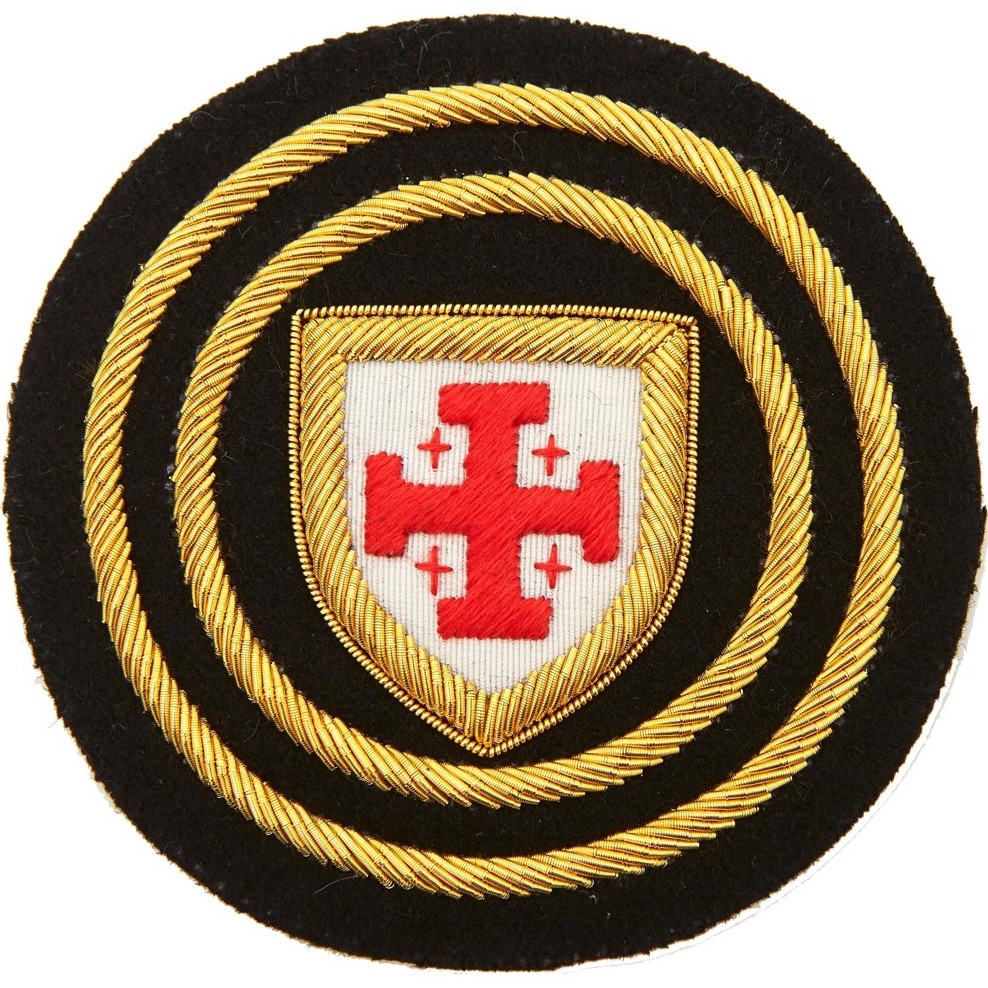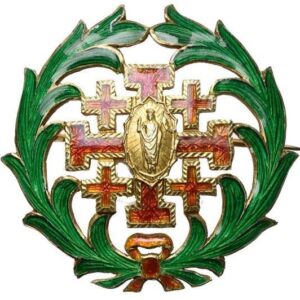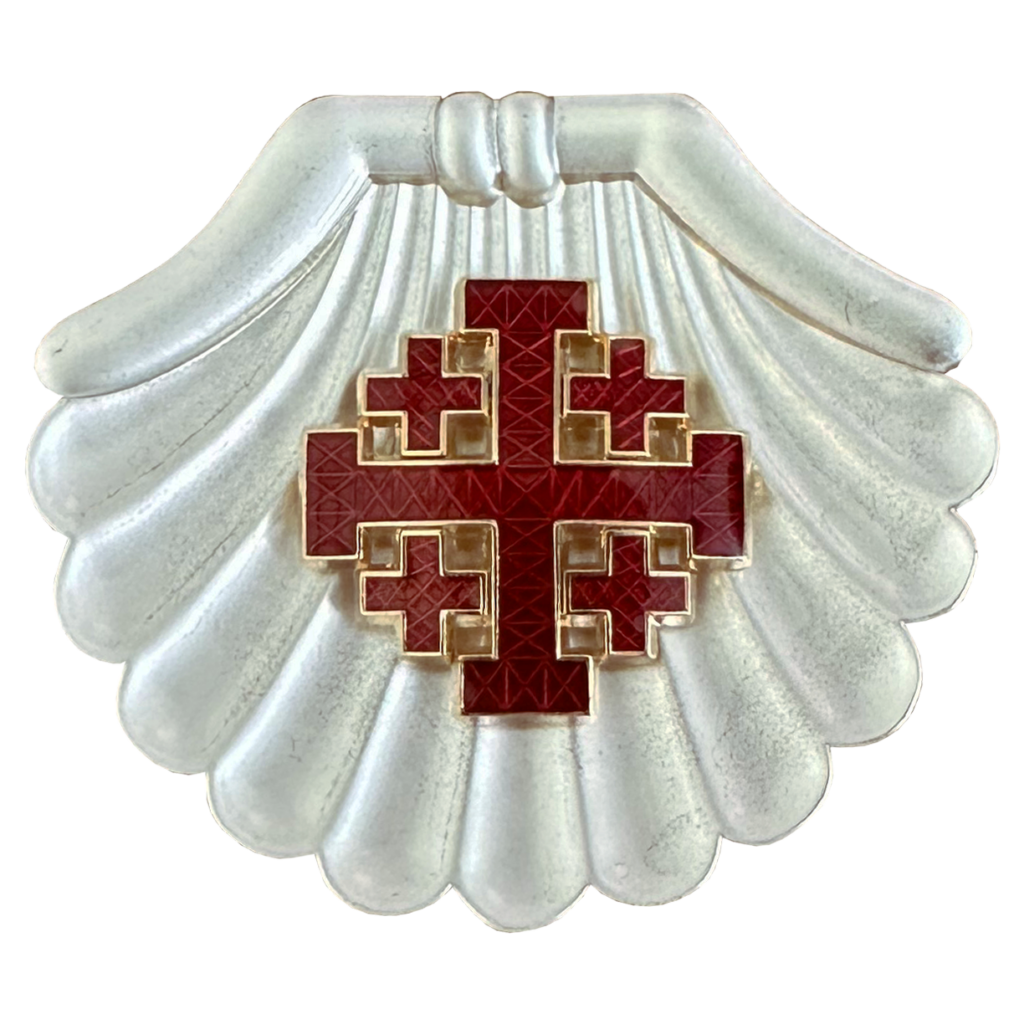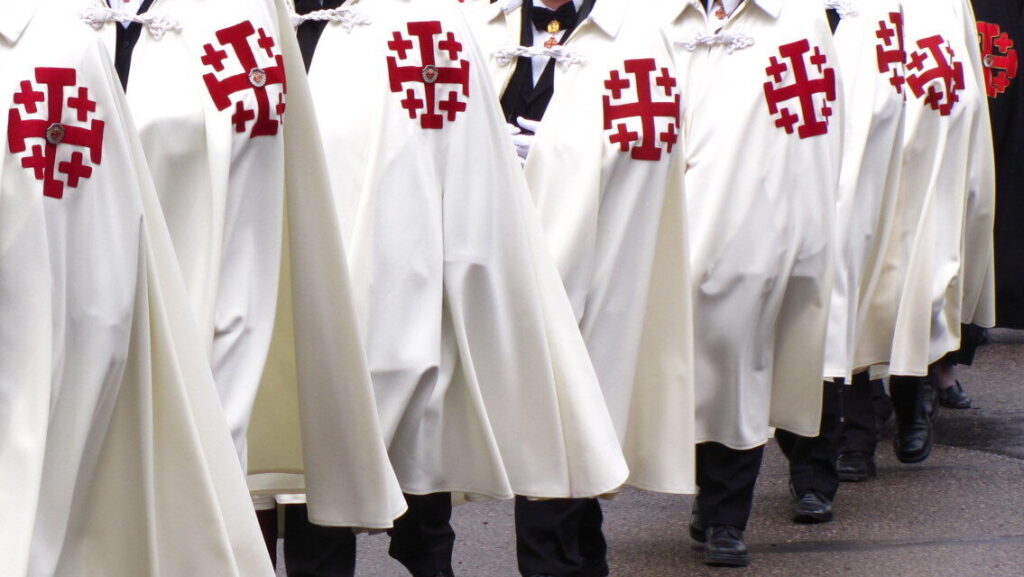
Membership in the Order
the highest Papal award which can be conferred on clergy and laity alike.
Membership
A Lifelong Commitment
Membership in the order means taking on a commitment for life. The commitment is to be a Witness to the faith, to lead an exemplary Christian life of continuing charity in support of the Christian communities in the Holy Land, and to practice the true charitable commitment of a Christian.
Membership in this Order is the highest Papal award which can be conferred on clergy and laity alike. As stated in the Constitution of the Order, “members in the Equestrian Order of the Holy Sepulchre of Jerusalem are distinguished by: their assiduous practice of Christian faith; living by the highest standards of moral conduct; their exemplary involvement in the activities of the Church at the parish and diocesan levels; their willingness to engage in the specific apostolate of the Order at the service of the Church; their ecumenical spirit; and their active interest in the needs and problems of the Holy Land.”
Membership in the Order additionally requires us to sustain and aid the charitable, cultural and social works and institutions of the Catholic Church in the Holy Land, particularly those of the Latin Patriarchate of Jerusalem with which the Order maintains traditional ties.
The purpose of joining the Order is to serve the Catholic Church on a global scale and to carry out acts of charity to make the operations to maintain the Christian presence in the Holy Land possible. While we benefit from joining in community with our fellow Catholics, personal gain or prestige is not the focus.
A humbling Endorsement
Nomination to the Order
Candidates who show an active interest in the Order and its mission are nominated and seconded by existing members of the Order who have firsthand knowledge of the candidate’s active participation in Parish and Diocesan works.
Membership in the order means taking on a commitment for life. The commitment is to be a Witness to the faith, to lead an exemplary Christian life of continuing charity in support of the Christian communities in the Holy Land, and to practice the true charitable commitment of a Christian.
The Order is comprised of wonderful Knights and Dames who care deeply for our fellow Christians in the Holy Land. You, our members, are the lifeblood of the Order. Nominate those who will observe and promote the objectives of the Order. Nominate those who will practice the virtue of charity, supporting the Church in the Holy Land. Nominate those who will foster in all people of good will an interest in the Holy Places.
Nominations are accepted from June 1st – November 1st.
For information, contact the Lieutenancy Office at (213) 626-0776 or by clicking below.
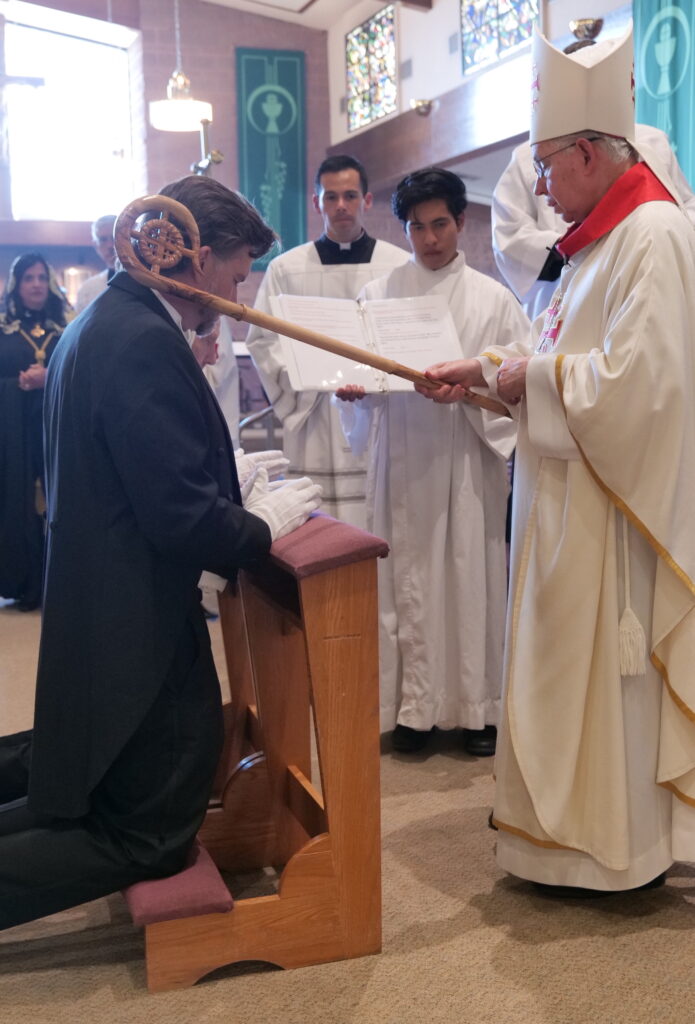
An Introductory Phase
The Associates Program

The Grand Magisterium of the Order recently requested the formation of an Associate Membership to the Order which would include practicing Catholics between the ages of 20 – 35 who have an interest in enhancing their Catholic faith through a commitment to a more spiritual life while learning about the Holy Land and the needs of our fellow Christians living there.
In 2022, the Western Lieutenancy of the Holy Sepulchre formed a pilot program in the San Diego diocese to formulate the essentials of this membership. We are now seeking young faithful Catholics to engage in the spiritual and corporal works of the Order. We hope that you will consider this invitation to join us in this special ministry as Associate Members.
What is the process for becoming an Associate Member in the EOHSJ?
- Complete the Application Form which includes demographic information and a short essay explaining your commitment to the Catholic faith and why you are interested in becoming an Associate Member
- Obtain a letter of support from your pastor or spiritual advisor stating that you have been a faithful Catholic for at least 5 years.
- Applications will be reviewed by the Lieutenant of the Western Lieutenancy and the Area councillor. If accepted, you will enter into a 3 month period of discernment before being invested as an Associate Member at a Mass Ceremony
What does Associate Membership in the EOHSJ entail?
- Invitation to participate in our monthly Rosary for the Christians in the Holy Land
- Invitation to participate in our Mornings of Reflection
- Invitation to participate in our Mid-Year meeting
- Invitation to participate in our Annual Meeting
- Invitation to join in a Pilgrimage to the Holy Land
- Participate in EOHSJ outreach programs in the Holy Land
Member Promotion
Achieving Rank in the Order
Each year an invitation to promotion is offered by the Lieutenant to those members who meet the requirements.
Promotion for Laity
Promotion to the next rank is recognition of the merits earned by those members who, during their time in the Order have shown particular evidence of active participation, commitment and generous charitable action and who can be held up as an example to others in the Lieutenancy. It is not conferred based on length of membership or requested by the member. Promotions are awarded annually at the Memorial & Promotions Mass held during the Annual Meeting.
First rank: Knight or Dame.
Second rank: Knight Commander or Dame Commander (eligible three years after investiture).
Third rank: Knight Grand Officer or Dame Grand Officer (eligible four years after Commander promotion).
Fourth rank: Knight Grand Cross or Dame Grand Cross (eligible five years after Grand Officer promotion).
The Fifth rank is bestowed by the Pope and rarely occurs, and that is the rank of Knight of the Collar or Dame of the Collar, (Established by Pope Pius XII in 1949).
Requirements for promotion differ somewhat from Lieutenancy to Lieutenancy, but they all have in common the following:
- Candidates must be a member in good standing;
- Have made regular Annual Contributions to the Order;
- Attended Annual Meetings and other Order events as regularly as possible;
- All Candidates for promotion are required to show evidence of meritorious service on behalf of their local parish, diocese, their community and on behalf of the Holy Land since their admission or their last promotion;
Promotion for Clergy
Knight Commander is the highest rank clergy and religious can attain, except that a monsignor can be promoted to Knight Commander. Knight Commander with Star (Grand Officer) is the highest rank a bishop can achieve. The rank of Grand Cross is reserved for cardinals.
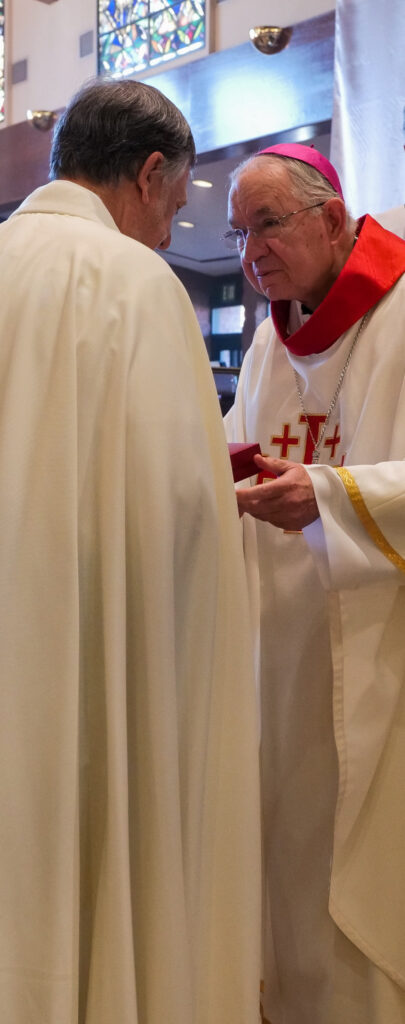
Uniform of the Order
History and proper wearing of our Attire
Ranks of the Order
Knights and Dames receive three different insignia bearing the Jerusalem Cross. No two insignia are worn together. In other words, Knights and Dames of any rank should not wear the neck insignia with the miniature insignia or the lapel pin.
The Insignia
For Knights and Dames
The Lapel Pin – a small lapel pin, called a rosette, is included in the Knight’s and Dame’s insignia. Its size and design indicate the Knight’s and Dame’s rank. You may wear, and are encouraged to wear, the rosette on any business suit. This is an important witness of the member’s commitment to the Order. The rosette is the only insignia of rank appropriate for business attire.
The Miniature Insignia – the Miniature insignia consists of a small star or cross of rank suspended from a narrow black silk ribbon which itself is suspended from a small gold pin enameled with strips of gold and white, the colors of the Holy See.
The Neck Insignia – The neck insignia with the Order’s cross has replaced the miniature insignia for most ceremonies. The neck insignia with the Jerusalem cross is the most appropriate decorations when formal attire is prescribed, for example, at Investitures or other ceremonies of equal solemnity.
For Clergy
The Lieutenancy’s Grand Prior may modify the regulations for clergy uniforms and decorations. The formal uniform of ecclesiastical members of the Order is a stole with the Jerusalem cross. When vested to celebrate Mass, ecclesiastical members, including deacons, should wear no insignia or decorations of the Order. It is appropriate to wear a stole embroidered with the Jerusalem cross.
Knights who are permanent deacons, but not vesting, should follow the regulations for wearing the Order’s insignia and decorations as set forth for lay Knight members.
Bishop members who are Knights Commander with Star should wear the star on the left side of the cassock or clerical suit.
How to Wear the Insignia of the Order
These videos discuss each item of regalia and illustrate how it is to be displayed according to rank.
Each video also includes two PDF guides to print and keep with your insignia box. Instructions:
– Choose the downloads which correspond with your rank.
– Print page one, then print page two on the reverse of page one.
– Fold the paper in the middle and store with your insignia.
Uniform Attire
History and Meaning
The vesting of each new Knight and Dame with a mantle or cape, a type of choir or church robe, signifies both the robes worn by those redeemed in the Blood of the Lamb at the time of the Apocalypse, and the cloak of justice which is testimony to the union by grace of the members of the Order with Christ, the Immaculate Lamb of God. It is the visible insignia of the Order, marking it in a special, historic way. The mantle of the Order, revived by Pope Pius X, is the oldest link to the Crusaders, who originally adopted a creamy white woolen mantle marked by a large red Jerusalem cross on the left breast.
The mantle bears a prominent representation of the Jerusalem Cross, the five crosses potent, which constituted the arms of Godfrey de Bouillon and now are on the banner and emblem of the Order. Their blood-red color reminds us of the love of Christ our Redeemer, of His blood shed for us, His death, and His resurrection. The use of this insignia has continued since its adoption by Godfrey de Bouillon in 1071. However, the Jerusalem cross predates Godfrey’s adoption of it; in fact, it can be traced to Charlemagne in the year 800.
Cross (Jerusalem, Crusader’s, Fivefold) This complex form is composed of a central cross made of four tau crosses representing the Old Testament law. The four smaller Greek crosses represent the fulfillment of the law in the gospel of Christ. Others have interpreted it to represent the missionary work of the church – spreading the gospel to the four corners of the earth. Still others have acknowledged the five crosses to represent the five wounds of Christ on the cross (hands, feet and side). The cross appeared on the coat-of-arms Godfrey de Bouillon, the first ruler of the Latin Kingdom of Jerusalem. It was embodied in the heraldry of the Crusaders.

How to Wear the Uniform
Members should only wear the uniform during official Lieutenancy functions or ceremonies. They may not wear the uniform or even the mantle in public functions and ceremonies without prior authorization from the respective Lieutenancy or Magistral Delegation, as well as that of the Lieutenancy or Magistral Delegation where the function or ceremony takes place.
For Knights
Mantle — A white, woolen mantle/cape, with the red Jerusalem cross.
Beret — black velvet cap with badge applied at the band with the Scarlet Cross of Godfrey de of Bouillon on a silver shield.
Gloves — White gloves are to be worn.
Church attire under the mantle/cape: dark suit or dark sport coat and pants with white shirt and tie; white tie (tails) for Investiture Mass.
For Dames
Mantle — A black silken mantle/cape, with the red Jerusalem cross emblazoned in the same fashion as on the Knight’s mantle, was adopted for the newly accepted women with the title Dame. The black Dames’ mantle is an important link to the Order’s history. In the late 1800’s, when Pope Leo XIII invited women to join the Order, the approved attire for women attending the Papal Court at the Vatican was a black dress, black mantle and mantilla. Thus, this fashion became the standard attire for Dames of the Order.
Mantilla — Black lace in the Vatican or Spanish mode.
Gloves — Black gloves of a solid fabric (cotton, polyester, leather) are to be worn; long gloves if wearing a short-sleeved dress, short gloves if wearing a long-sleeved dress.
Church attire under the mantle/cape: Black or dark colored dress or pantsuit; formal black dress for the Investiture Mass.
